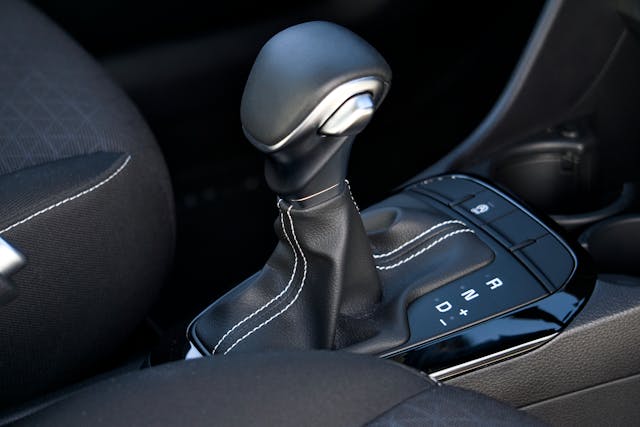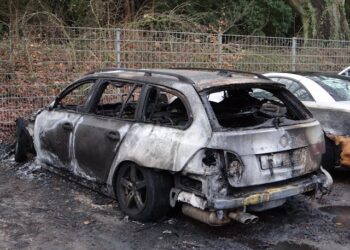Discover what does D3 mean in a car, how it works, when to use it, and why it can change the way you drive.
If you’ve ever glanced down at your car’s gear shift and spotted a mysterious “D3” marking, you’re not alone. Plenty of drivers cruise through their entire ownership without ever touching it, while others use it daily without fully understanding what’s happening under the hood.
This isn’t just a spare letter-number combo thrown in for decoration. “D3” is an intentional gear mode designed for specific driving conditions, and knowing how (and when) to use it can make a noticeable difference in your control, safety, and even the health of your transmission.
Let’s strip away the guesswork and dig deep into what D3 really does, how it interacts with your car’s automatic transmission, and why ignoring it could mean missing out on a tool you didn’t know you had.
What You'll Discover:
The Basics: What D3 Stands For
In most automatic transmission cars, “D” means “Drive.” This is the gear you engage for normal forward motion. But D3 isn’t a separate gear, it’s more like a boundary or limit.
When you shift to D3, your car’s transmission automatically locks out higher gears (usually 4th, 5th, or 6th, depending on your transmission) and only cycles between 1st, 2nd, and 3rd gears.
Think of it as telling your car, “Don’t bother with top gear; let’s stick to the lower range.”
The benefit? More engine braking, quicker throttle response, and reduced gear hunting on tricky terrain.
How D3 Fits Into an Automatic Transmission
To understand D3’s magic, we need to briefly peek into how automatic transmissions work. In a typical “D” mode:
- The transmission computer monitors your speed, throttle position, and load.
- It selects the gear that offers the best fuel economy while still giving you enough power.
- This often means shifting into higher gears quickly, especially on flat highways.
In D3:
- The upper gear range is capped at 3rd.
- Your car stays in lower gears longer, which keeps the engine in a higher RPM range.
- This gives you faster acceleration when you press the gas and better engine braking when you lift your foot.
It’s a manual-like benefit without the clutch pedal.
When to Use D3
This is where the “hidden weapon” aspect comes in. Most drivers leave their shifter in “D” no matter the situation, but D3 has very real, situational advantages.
City Driving with Frequent Stops
If you live in a busy urban area with stop-and-go traffic, D3 can reduce the constant upshift/downshift cycle. Instead of jumping to a higher gear just to downshift again at the next red light, your car stays in that sweet spot where it can accelerate smoothly without hesitation.
Downhill Driving
Ever felt your brakes burning on a long downhill? That’s because in “D,” your car coasts in a higher gear, forcing you to use the brakes to slow down. D3 uses engine braking, letting the engine naturally slow the vehicle, reducing brake wear and increasing control.
Uphill or Mountain Roads
Climbing a steep grade in “D” often leads to sluggish acceleration or gear hunting. D3 keeps the engine in its power band, making uphill climbs smoother and more consistent.
Wet, Icy, or Slippery Conditions
Lower gears mean more controlled torque delivery to the wheels, which helps prevent sudden wheel spin. While D3 isn’t a substitute for snow mode or traction control, it can give you more predictable handling in slippery spots.
Why Not Just Drive in D3 All the Time?
It’s tempting to think, “If D3 is so great, why not use it for everything?”
Here’s why:
- Fuel Economy Drops: Staying in lower gears means higher RPMs and more fuel consumption.
- Unnecessary Engine Wear: Running at high RPM for no reason increases engine strain.
- Noise and Vibration: The car will feel louder and less relaxed on highways.
D3 is a tool, not a default. Use it strategically, not habitually.
The Science Behind Engine Braking in D3
One of D3’s best tricks is engine braking, but this isn’t just a driving buzzword. When you release the accelerator in a lower gear, the transmission forces the engine to rotate faster than it would at that speed in a higher gear. This creates internal resistance, which slows the vehicle without using the brakes.
Why it matters:
- Reduces brake fade on long descents.
- Improves control in steep terrain.
- Minimizes risk of overheating brake components.
It’s the difference between creeping safely down a mountain road and nervously riding the brakes the whole way.
Manual vs. Automatic: The D3 Comparison
If you’ve driven a manual transmission, you already know the D3 concept, you’d just downshift to 3rd and avoid shifting higher. The difference is that in an automatic, D3 tells the transmission computer to never go beyond 3rd gear unless you manually change it.
That makes it a middle ground between full “Drive” and the extreme of manually selecting 1st or 2nd gear.
Real-World Scenarios Where D3 Shines
Let’s make it even more practical by walking through actual driving scenarios.
- Descending a Mountain Pass: You’re on a winding descent in the Rockies. In “D,” the transmission keeps shifting up, forcing you to brake often. In D3, your car naturally slows without constant braking, keeping your brake pads cooler.
- Stoplight Sprint in City Traffic: The light turns green, and you need to merge quickly before the next lane closes. In D3, your car is already in a lower gear and delivers instant power without a delay.
- Slippery Morning Commute: Light snow has covered the roads. In D3, the reduced gear range helps you accelerate more gently, reducing wheel spin and giving you steadier traction.
My Take: Why D3 Deserves More Attention
Most modern drivers have grown used to letting the transmission make all the decisions. D3 is a reminder that sometimes you need to take back a little control.
It’s not about pretending your family sedan is a race car, it’s about recognizing that every piece of your vehicle has a purpose. And in certain moments, D3 is the quiet ally you’ll be glad you remembered.
Common Misunderstandings About D3
- “D3 is a sport mode.” Not exactly. While it can improve acceleration, it’s not designed for racing, it’s for control and stability.
- “D3 is bad for the engine.” Used appropriately, it’s harmless. The key is not to over-rev the engine.
- “Only old cars have D3.” Many modern vehicles still offer it, though some now use “S” or manual-style paddle shifters instead.
Key Takings
- D3 limits your automatic transmission to the first three gears, improving control in specific driving situations.
- It’s best used for city driving, steep inclines/declines, and slippery roads, not for all-day cruising.
- D3 enhances engine braking, reducing wear on brakes during long downhill drives.
- It can improve throttle response and prevent gear hunting on hilly or uneven terrain.
- Fuel economy will drop if you use D3 unnecessarily, so reserve it for when you need its benefits.
- Think of D3 as a driving tool, not a permanent setting, using it wisely makes you a more adaptable and confident driver.





